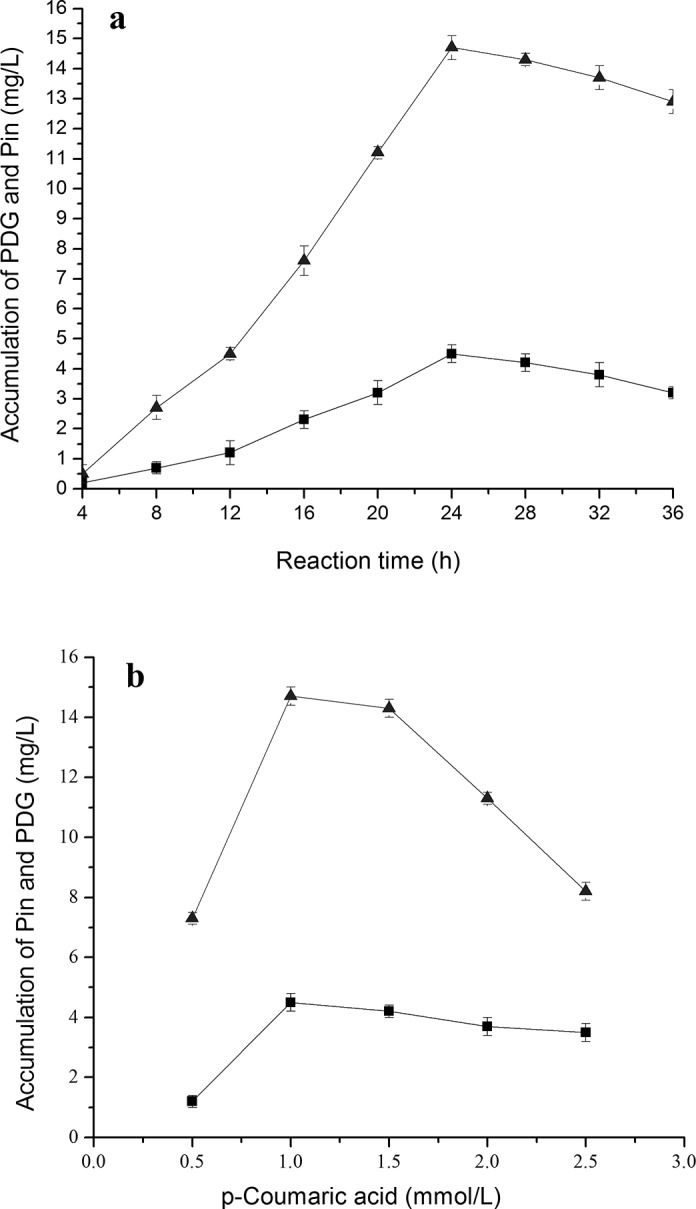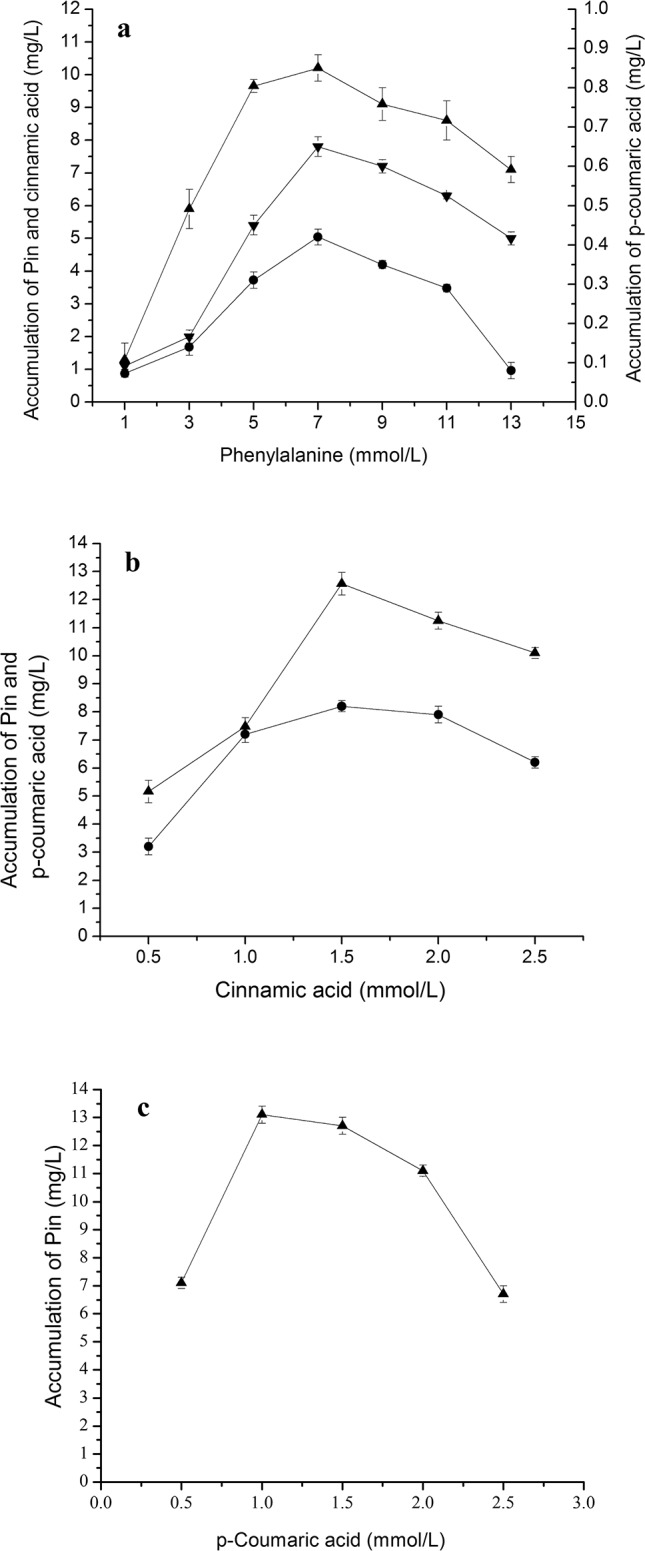There are errors in the captions for Table 2, Fig 4 and Fig 5. Please find the corrected captions here.
Table 2. Production of Pin by Phomopsis sp. XP-8 cells using different amino acids in the absence of glucose.
Values are the means of three replications and shown with standard deviation.
| Control | Amino acids (7.0 mmol/L) added in the control | |||||||
|---|---|---|---|---|---|---|---|---|
| Leu | Thr | Lys | Phe | Tyr | Trp | His | ||
| Dry cell weight (g/L) | 1.02±0.12d | 1.21±0.10cd | 1.13 ±0.12d | 1.31 ±0.14bcd | 1.78 ±0.12a | 1.64±0.12ab | 1.56±0.14abc | 1.82±0.14a |
| Pinoresinol (mg/L) | 0c | 0c | 0c | 0c | 10.02±0.4a | 2.92±0.22b | 0c | 0c |
Fig 4. Effects of p-coumaric acid additions on PDG and Pin production.

The signals in the figures indicate PDG (square), Pin (triangle). The used condition is 1.0 mmol/L p-coumaric acid additions (a) and reaction time of 24 h (b).
Fig 5. Bioconversion of Pin from Phe, cinnamic acid and p-coumaric acid.

The reaction time was 40 h for phenylalanine in (a), 32 h forcinnamic acid in (b) and 24 h for p-coumaric acid in (c). The signals in the figures indicate cinnamic acid (downtriangle), p-coumaric acid (circle), Pin (uptriangle).
Reference
- 1.Zhang Y, Shi J, Liu L, Gao Z, Che J, Shao D, et al. (2015) Bioconversion of Pinoresinol Diglucoside and Pinoresinol from Substrates in the Phenylpropanoid Pathway by Resting Cells of Phomopsis sp.XP-8. PLoS ONE 10(9): e0137066 doi:10.1371/journal.pone.0137066 [DOI] [PMC free article] [PubMed] [Google Scholar]


